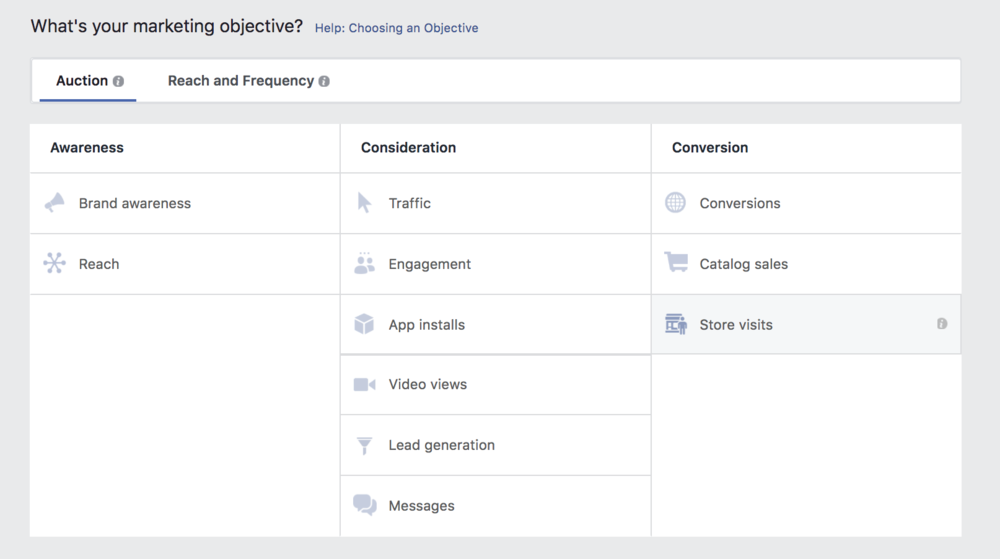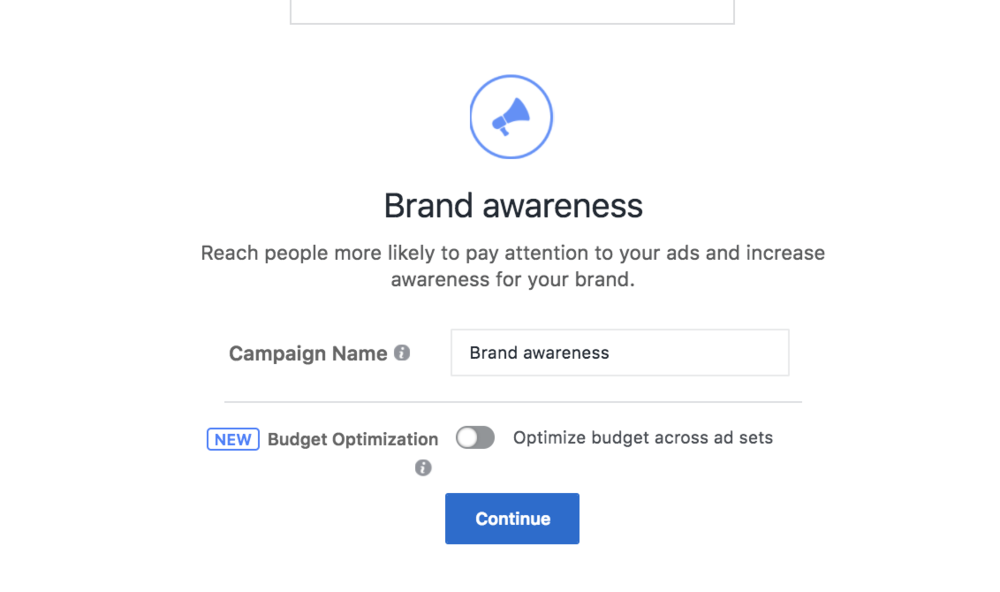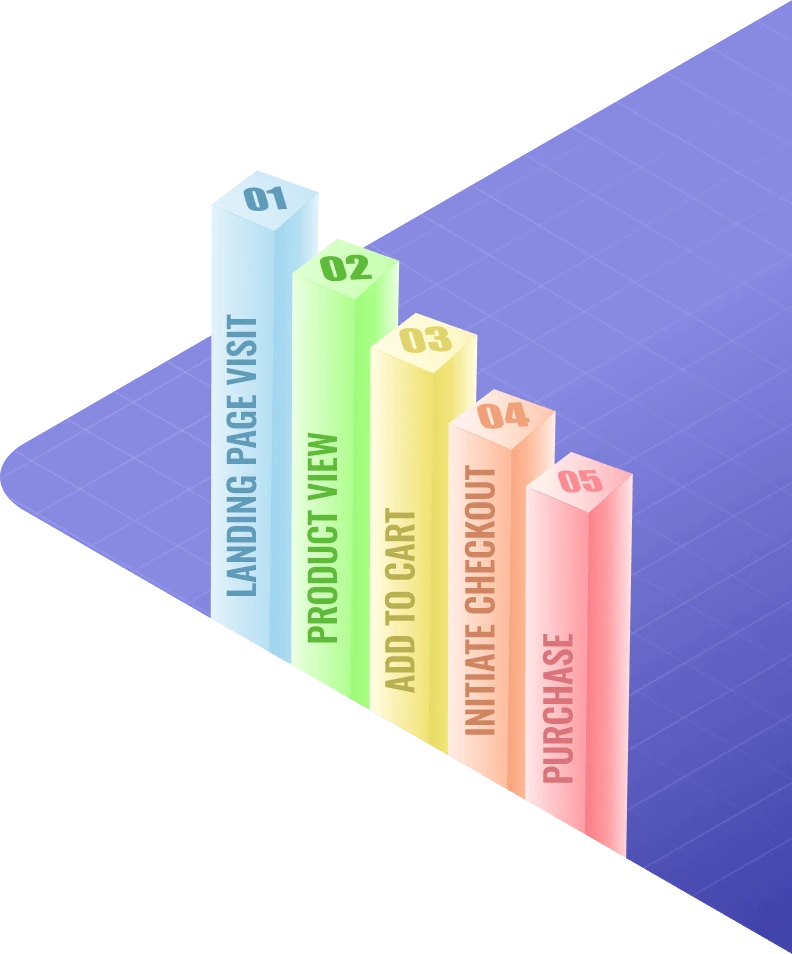There are currently 3 campaign objectives, with 11 sub-objectives available on the Facebook advertising platform. We’ll go over each one and explain how it is we use each one. Some are pretty straightforward, and others a little more complicated. If you’ve ever wondered when or how to use them, then this guide is for you!
This is a multi-part guide. In this release (part 1) we discuss:
Auction Vs. Reach and Frequency
Awareness Campaigns > Brand Awareness > Reach
We also discuss some key metrics regarding Traffic campaigns and some common questions we receive regarding a few of the key metrics to consider with a Traffic Campaign.
It’s time to initiate a Facebook campaign! You’ve created an ad account, hit the “Create+” button and are ready to get started. You’ll now end up on this page.


Here is a list of common questions and scenarios on when we would use each option.
Auction Vs. Reach and Frequency-
We always go with the auction option, why pay a fixed price when you may complete your objective for less.
Awareness Campaigns-
We use these when we’re trying to reach the maximum number of people, and there is no other KPI metric we are concerned with. If you want impressions and reach, then this is the option for you. It’s mainly used in a branding campaign.
Brand Awareness puts your ad infront of people who are likely to be interested in it.
Reach puts your message in front of the maximum number of people.
Once you select your campaign goal, it’s time to name your campaign. You also have the option to A/B test between adsets and allow Facebook to automatically optimize your spend between ad sets. What does this mean and why would you use it?


Name your campaign and decide if you want to optimize across ad sets.
Within each ad set you can test out different targeting parameters, creative etc. If you’re advertising for a Jewelry store for example, you may want to test the difference between several audiences like “recently engaged” vs. “upcoming anniversary” vs. “friends of recently engaged”. If Facebook see’s that your campaign for “upcoming anniversary” is performing better, it will direct your spend towards that ad set.
After you click Continue you’ll land on the Ad Set building page. Here you will decide:
Targeting Options > Location. Where do you want to target? Do you want to target everyone in this location, or people who live here?
Audience Options > who do you want to target? What are their characteristics? You can select from multiple different options relation to demo, interests and behaviors.
Placements > What device(s) and placement(s) do you want your ad to show on?
Budget & Flight Dates > how much do you want to spend, and when do you want your ads to run?
For campaign optimizations you have a few choices. If you selected Brand Awareness, your campaign can only be optimized for “ad recall lift” meaning they’ll serve the ad to people who are likely to be familiar with your brand and will likely remember seeing your ad.
If you selected “Reach” as your campaign objective then you can select between optimizing for “reach” which will serve your ad to the maximum number of people, and “impressions” which will serve your ad as many times as possible. The real difference here is to determine if serving your ad to the most people is important, or is serving your ad the most times important.
After you’ve completed this step you’ll be on to building your actual ad.
In our next segment we’ll discuss Consideration Campaigns and will kick that off with “Traffic”.


